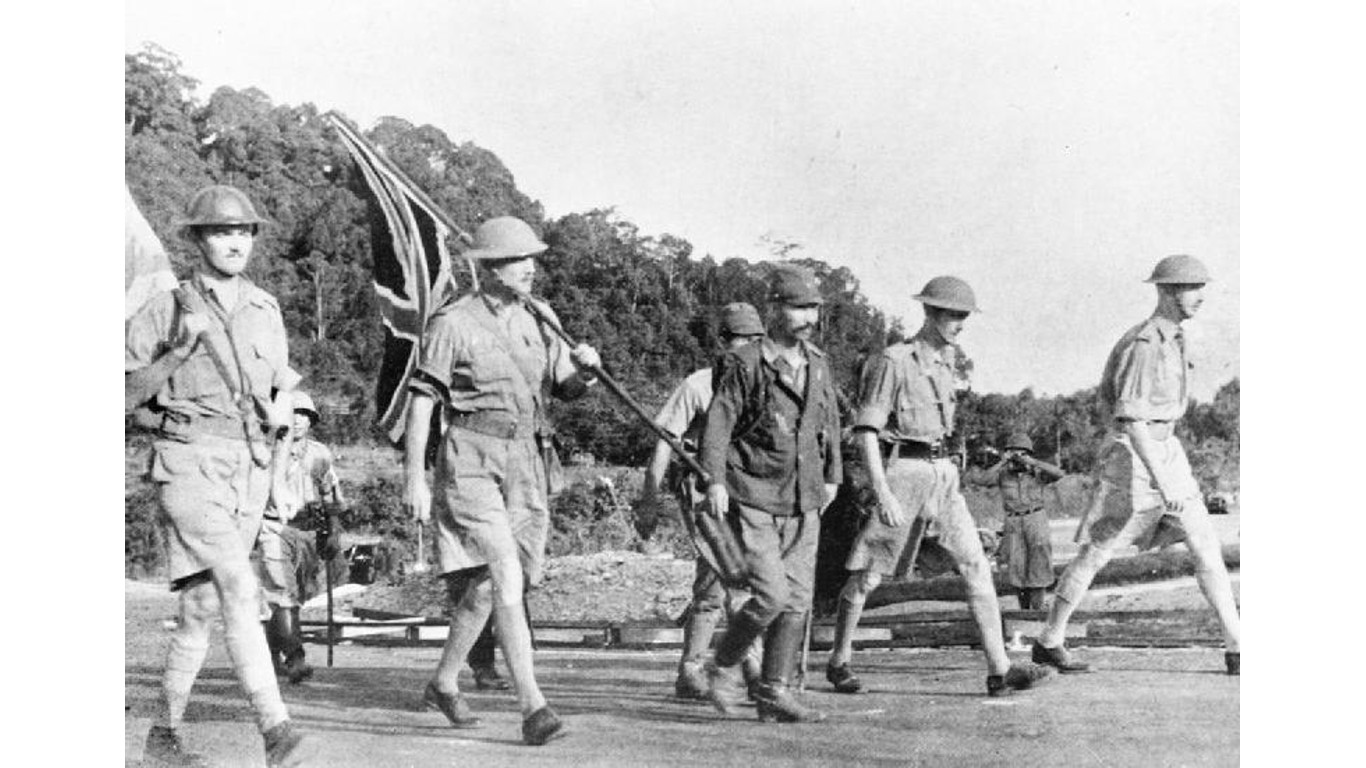
On April 9, 1865, General Robert E. Lee and his Confederate troops were surrounded by Federal troops on all sides as they attempted to flee west from the Virginia village of Appomattox Court House. General Lee knew that there was no escaping. Rather than sacrifice the lives of thousands of men in vain, he chose to surrender to Union general Ulysses S. Grant, marking the beginning of the end of the Civil War. (Here’s how every war in U.S. history ended.)
Grant’s terms were famously lenient, allowing Confederate officers to keep their horses and sidearms, and allowing the soldiers to return home on parole, with assurance that they would not be prosecuted for treason unless they took up arms again. Grant also sent rations from the Union army to the surrendered troops.
Lee’s capitulation is one of the most famous surrenders in history. To compile a list of other surrenders that changed the course of history, 24/7 Tempo consulted history websites including Britannica, New World Encyclopedia, and History and Headlines.
Not all surrenders were as smooth or merciful as the exchange between Lee and Grant. At the end of World War II, Germany and Japan were both forced into unconditional surrenders, meaning that they would be given no guarantees of clemency. The Potsdam Declaration, which outlined the terms for Japan’s surrender, stated that the alternative to unconditional surrender would be “prompt and utter destruction.” Japan accepted the terms and was subsequently occupied by Allied forces, who enacted political and social reforms. (Here’s a list of every country that has surrendered to the U.S.)
Click here to see 16 surrenders that changed the course of history
The Empire of Japan may have gotten off easy compared to the Banu Qurayza, a Jewish tribe who lived in what is now Saudi Arabia during the advent of Islam. Their surrender to Muhammad, the founder of Islam, after nearly a month of war was followed by a mass slaugher of 600 men, and the enslavement of the women and children.

Surrender of Athens
> Winner: Sparta
> Surrendered: Athens
> Year: 404 B.C.
The Peloponnesian War, fought between the two most powerful Greek city-states, Athens and Sparta, dragged on for 27 years. Tables finally turned when the Persian empire came to Sparta’s aid, funding the Spartan general Lysander as he destroyed the Athenian naval fleet and besieged Athens. As Athenians faced famine due to the siege, the city surrendered. The Spartans took mercy on Athens and spared its population and infrastructure rather than destroying the city.
[in-text-ad]

Surrender of the Banu Qurayza
> Winner: Muslims from Yathrib (Medina)
> Surrendered: Banu Qurayza tribe
> Year: 627
The Banu Qurayza were the last Jewish tribe who lived in Yathrib (what is now Medina in Saudi Arabia). To defend their right to remain in the area, the Qurayza had built alliances with the Quraysh of Mecca, who battled with Muslim forces led by Muhammad (the founder of Islam). Muhammad then beseiged the Qurayza for 25 days. In the end they surrendered, but Muhammad’s forces beheaded over 600 men and sold the women and children into slavery. Their defeat ceded influence in the Arabian Peninsula to Islam.
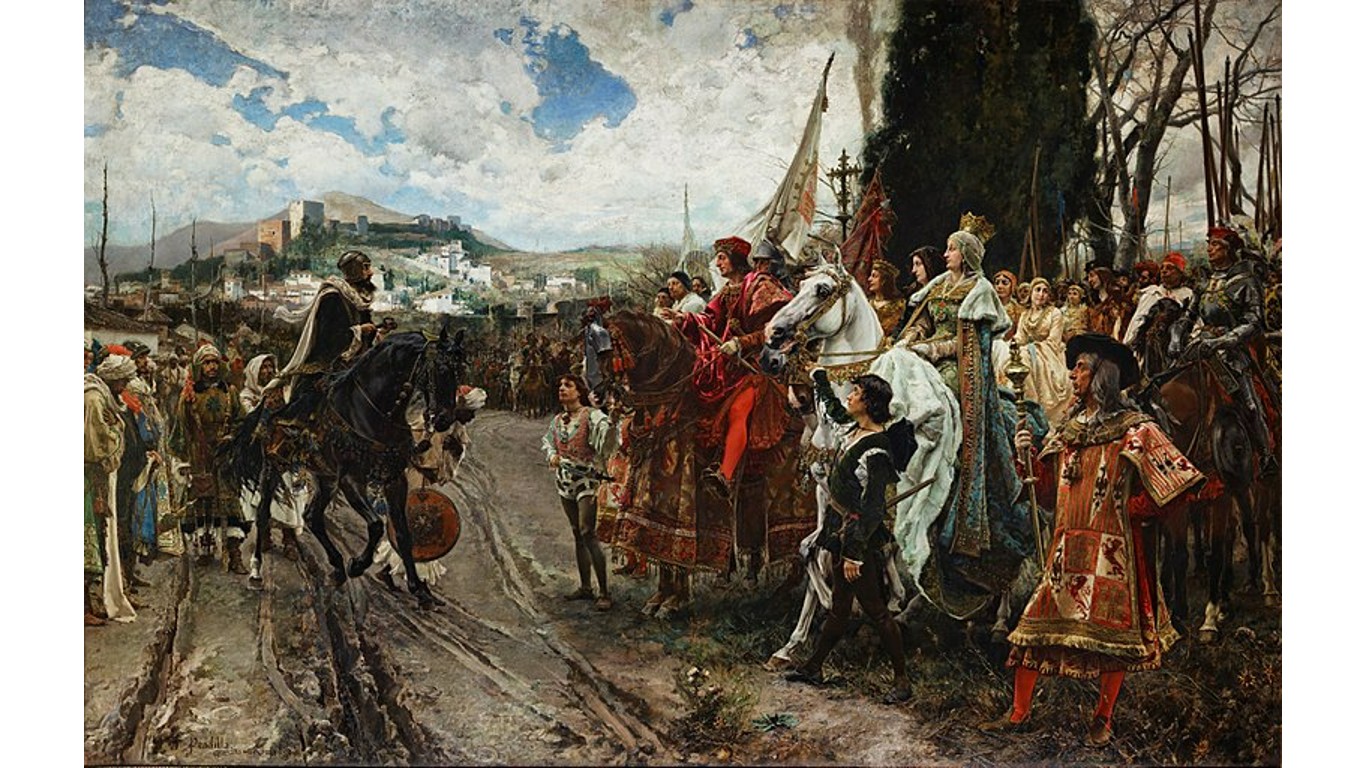
Surrender of Granada
> Winner: Spain
> Surrendered: Muslim Sultanate of Granada
> Year: 1492
The Emirate of Granada was the last Islamic state in Iberia. A 10-year war between Granada and the Catholic monarchs Ferdinand II of Aragon and Isabella I of Castile ended when Sultan Muhammad XII, also known as King Boabdil, surrendered to Castilian forces. Granada was annexed into Castile and both Jews and Muslims were subsequently forced to convert to Christianity or be exiled.

Surrender at Yorktown
> Winner: American colonists
> Surrendered: United Kingdom
> Year: 1781
After a decade of tensions between Britain and its American colonies, the American Revolution broke out in 1775. Battles on American soil lasted until late 1781, when American and French troops besieged the British Army for over a month in Yorktown, Virginia. The British general Charles Cornwallis eventually surrendered, leading to an armistice and the end of the war.
[in-text-ad-2]

Surrender at Ulm
> Winner: France (Napoleon)
> Surrendered: Austria
> Year: 1805
Early in the Napoleonic Wars, Austria joined an alliance of European countries known as the Third Coalition against France. As Napoleon threatened to conquer Italy, Germany, and the U.K., Austria attempted to unite with Russian forces to prevent the French from entering Eastern Europe. During a five day battle in Bavaria, Napoleon’s forces surrounded the Austrian army before Russian reinforcements arrived, forcing them to surrender or lose 23,000 men. Napoleon subsequently took Vienna and launched what was to be seen as the most successful year of his career.

Surrender of Napoleon
> Winner: Great Britain
> Surrendered: Napoleon Bonaparte
> Year: 1815
Marking the end of the Napoleonic Wars and the First French Empire, two coalitions of armies from the U.K., the Netherlands, and multiple German states defeated Napoleon’s forces at Waterloo in what is now Belgium. Six weeks after his resounding defeat, Napoleon surrendered to Captain Frederick Maitland of the HMS Bellerophon in the French port of Rochefort, leading to the former emperor’s exile to Saint Helena and eventual death.
[in-text-ad]

Surrender of the French Foreign Legion
> Winner: Mexico
> Surrendered: France
> Year: 1863
During the Second Franco-Mexican War, imperialist France invaded Mexico in an attempt to install a monarchy amenable to French interests. The Mexican army defeated the French Foreign Legion during the Battle of Camarón, when 65 Legionnaires held their post against a Mexican army force 3,000-strong for 10 hours before finally surrendering with only two Frenchmen remaining alive. The episode was largely responsible for defining the legacy, and creating the myth, of the French Foreign Legion.
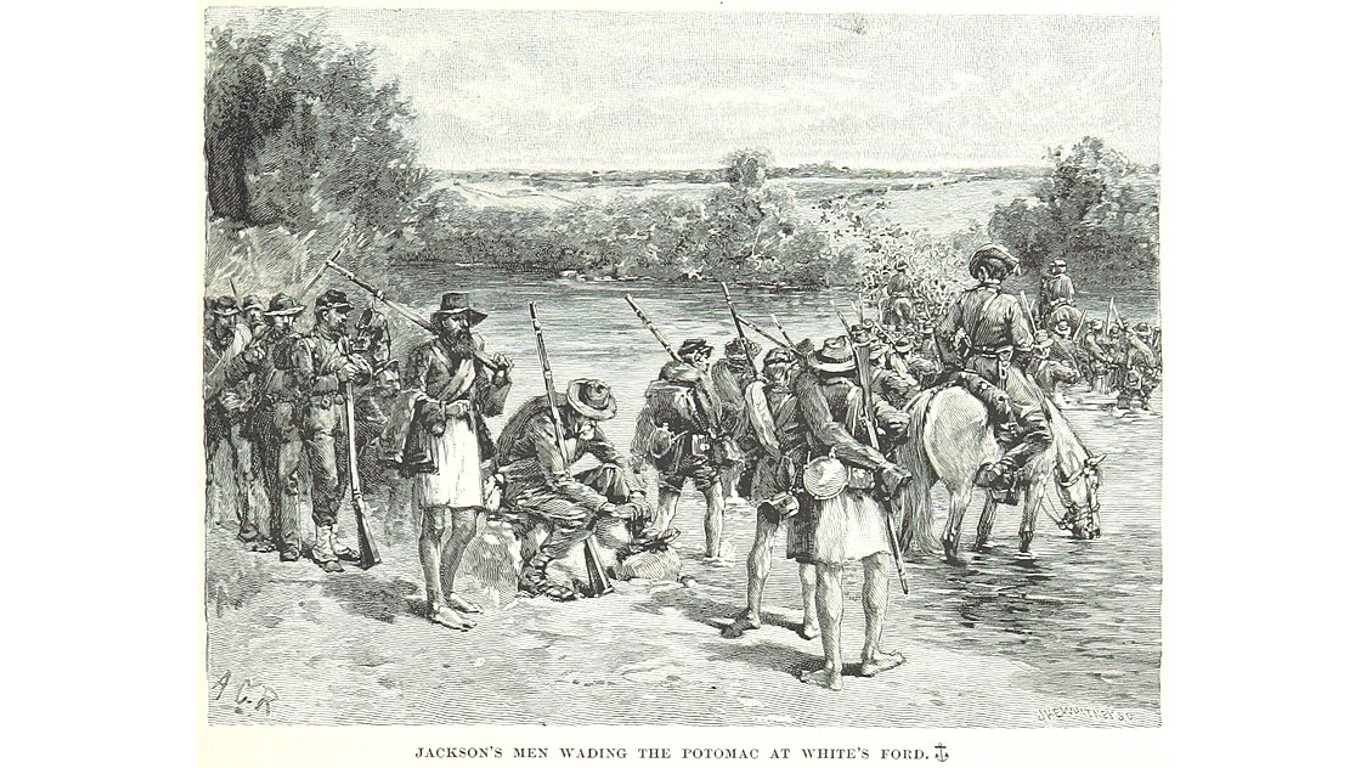
Surrender of the Army of Northern Virginia
> Winner: Union (Grant)
> Surrendered: Confederacy (Lee)
> Year: 1865
In April of 1865, after abandoning the Confederate capital and attempting to flee west and resupply, General Robert E. Lee realized that his army was trapped by Union forces. Rather than sacrifice his men to a certain fate, Lee chose to surrender to Union general Ulysses S. Grant, who allowed the rebel soldiers to lay down their guns and return home, rather than being tried for treason. Lee’s surrender effectively signaled the end of the Civil War.
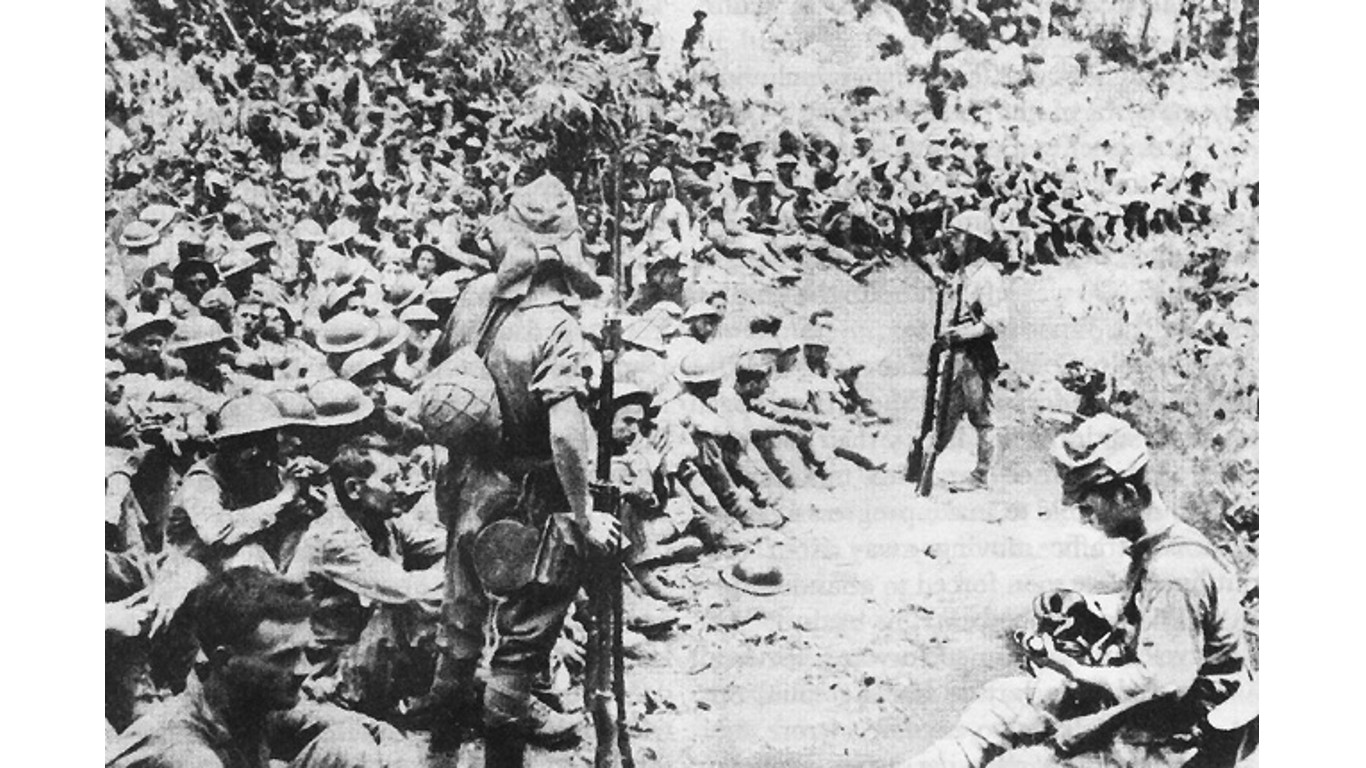
Filipino and American surrender
> Winner: Japan
> Surrendered: Filipino and American troops
> Year: 1942
Soon after Japan bombed Pearl Harbor, Japanese forces invaded the Philippines. Poorly supplied American and Filipino forces fought the Japanese Imperial Army and Navy for three months before finally accepting defeat. Major General Edward P. King, Jr. surrendered the province of Bataan against General Douglas MacArthur’s orders, and 78,000 soldiers – 12,000 of them Americans – were incarcerated by the Japanese and forced on a gruelling death march, during which many were tortured and thousands died.
[in-text-ad-2]

The fall of Singapore
> Winner: Japan
> Surrendered: Great Britain
> Year: 1942
Britain’s military base in Singapore was a crucial defense post in the Pacific Theater of World War II. Japan’s assault on Singapore resulted in the surrender of Lieutenant General Arthur Percival’s force of 90,000 British, Canadian, Indian, and Australian soldiers to a much smaller Japanese contingent. It was the largest British surrender ever recorded and ultimately resulted in the slaughter of civilians and the end of perceptions of European supremacy in warfare.
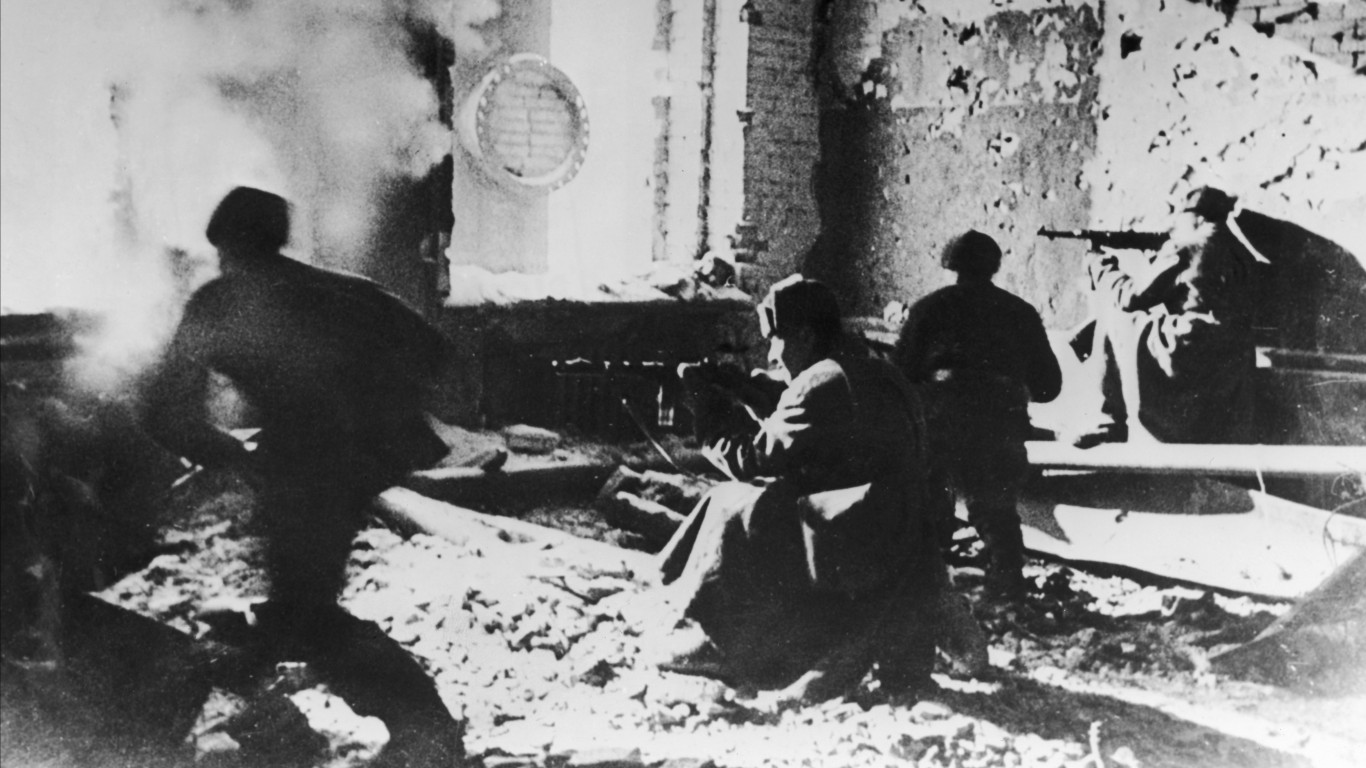
The fall of Stalingrad
> Winner: Soviet Union
> Surrendered: Germany
> Year: 1943
The Battle of Stalingrad, a strategically vital city in southwestern Russia, which turned out to be the bloodiest battle of World War II, was marked by close-quarters urban combat and direct assaults on civilians. The Soviet Red Army prevailed when they encircled the Germans, who were eventually forced to surrender after five months of fighting. This was the first German surrender and a turning point in the war.
[in-text-ad]

German surrender
> Winner: Allied Powers
> Surrendered: Germany
> Year: 1945
Soon after the execution of Benito Mussolini and the suicide of Adolf Hitler, German forces surrendered in multiple countries. On May 7, 1945, the Chief of Staff of the German Army, General Alfred Jodl, officially signed official documents of unconditional surrender to Allied forces in Reims, France. The next day in Berlin, German Field Marshal Wilhelm Kietel signed additional surrender papers to satisfy Soviet authorities, officially ending World War II.

Japanese Surrender at Tokyo Bay
> Winner: Allied Powers
> Surrendered: Japan
> Year: 1945
A week after the U.S. dropped atomic bombs on Hiroshima and Nagasaki, Emperor Hirohito announced Japan’s surrender to Allied Powers. The official ceremony took place a few weeks later on September 2 on the deck of the USS Missouri in Tokyo Bay, ending the Pacific Theater of World War II.
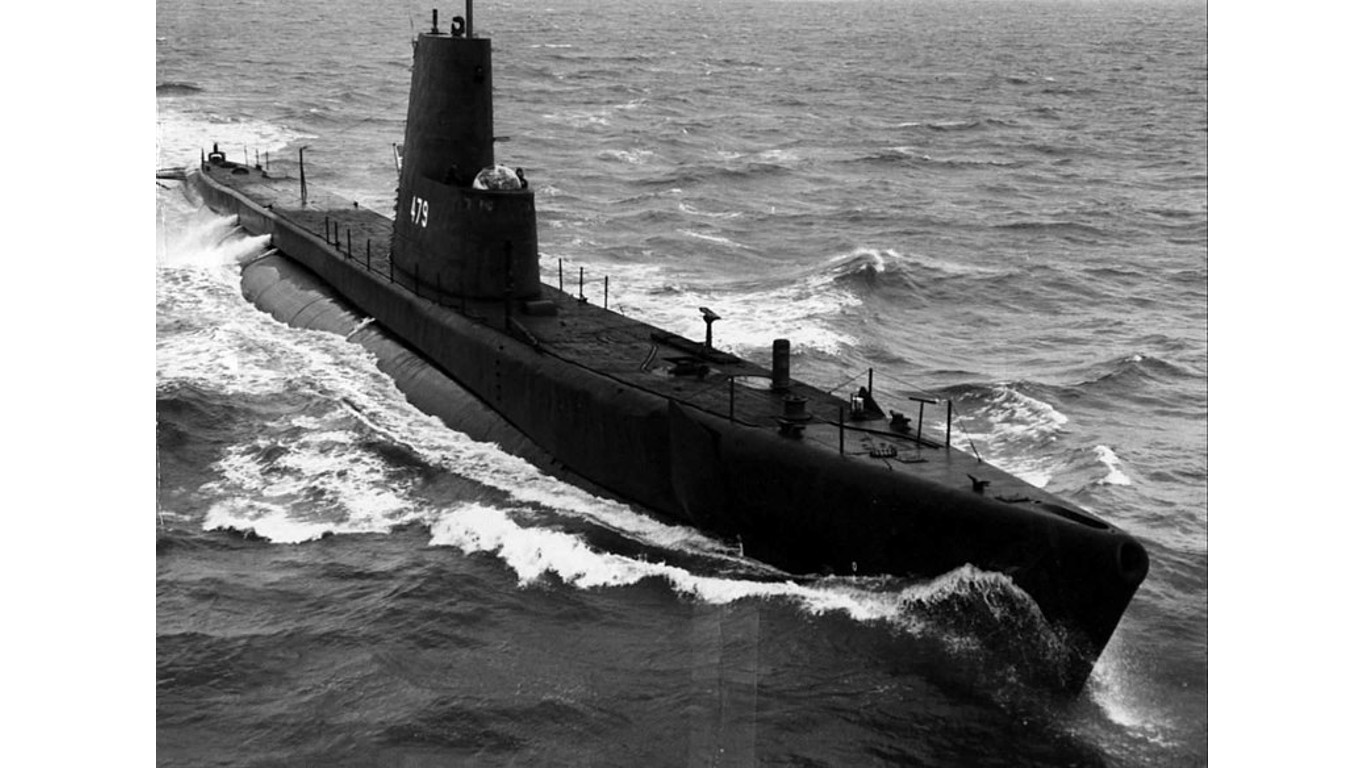
Surrender of the West Pakistani Army
> Winner: East Pakistan (now Bangladesh)
> Surrendered: West Pakistan (now Pakistan)
> Year: 1971
At the end of the Bangladesh War of Independence, nearly 95,000 troops from what was then West Pakistan surrendered to Bangladeshi separatists in what was then East Pakistan, in the largest surrender of troops since WWII. The surrender led to the creation of Bangladesh, the eighth most populous country in the world, and shifted the balance of power in South Asia.
[in-text-ad-2]
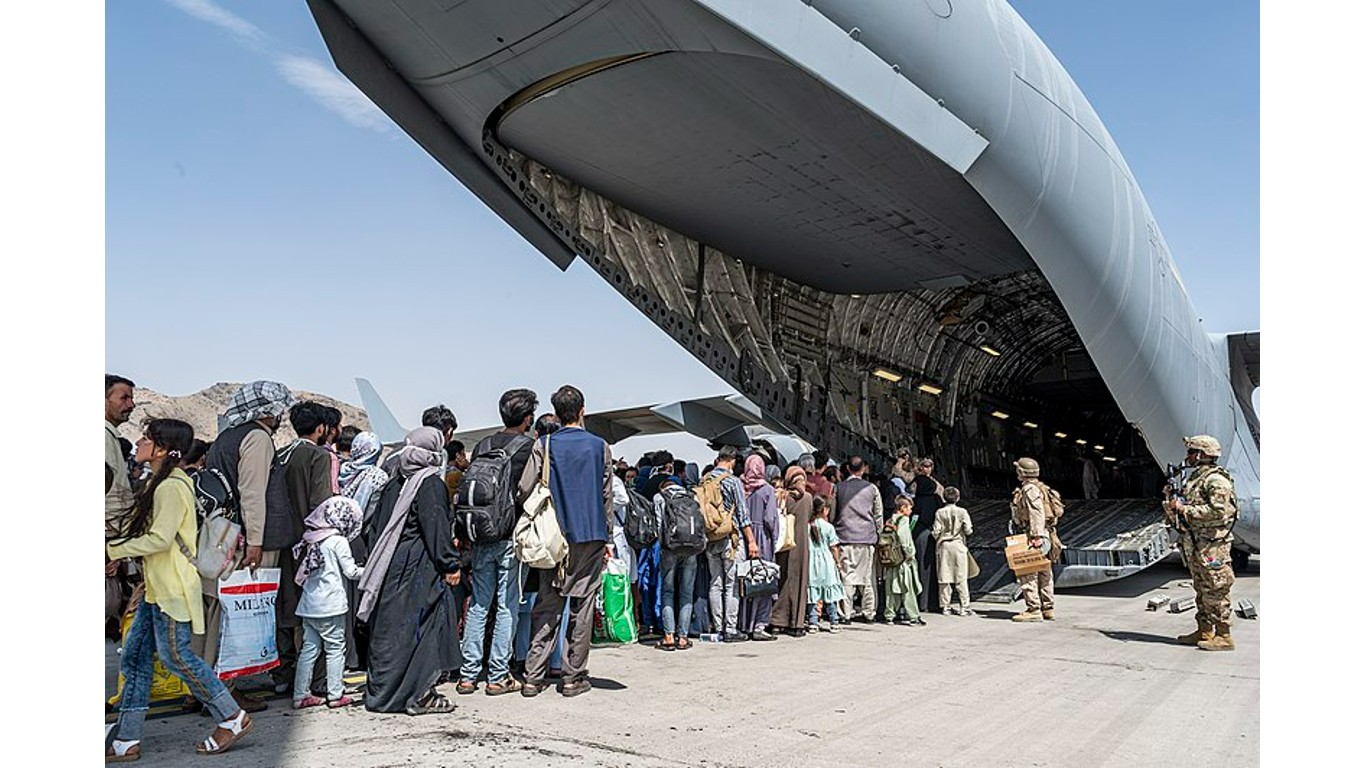
Surrender of the Afghani government
> Winner: The Taliban
> Surrendered: The civil government of Afghanistan and the Afghan armed forces
> Year: 2021
On May 1, 2021, twenty years after a U.S.-led coalition invaded Afghanistan and ousted the Taliban regime, American forces initiated their withdrawal from the country. Immediately, the Taliban began an offensive that Afghan armed forces were unable to hold off. On August 15, Afghan president Ashraf Ghani fled the country and the government ceded control to the insurgent group. Their victory led to widespread human rights violations and the relinquishment of many rights for women in the country.
In 20 Years, I Haven’t Seen A Cash Back Card This Good
After two decades of reviewing financial products I haven’t seen anything like this. Credit card companies are at war, handing out free rewards and benefits to win the best customers.
A good cash back card can be worth thousands of dollars a year in free money, not to mention other perks like travel, insurance, and access to fancy lounges.
Our top pick today pays up to 5% cash back, a $200 bonus on top, and $0 annual fee. Click here to apply before they stop offering rewards this generous.
Flywheel Publishing has partnered with CardRatings for our coverage of credit card products. Flywheel Publishing and CardRatings may receive a commission from card issuers.
Thank you for reading! Have some feedback for us?
Contact the 24/7 Wall St. editorial team.

